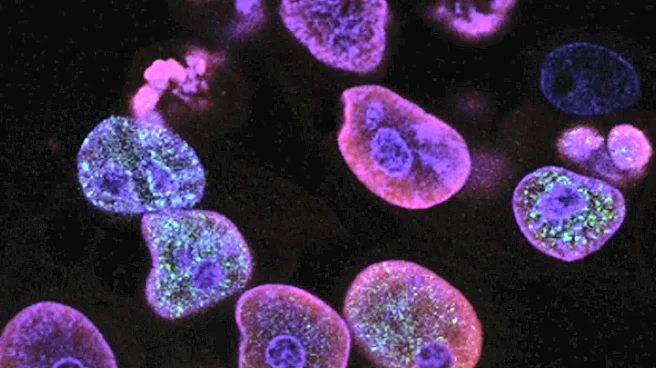What's Happening?
Recent research has highlighted the potential of specialized pro-resolving mediators (SPMs) in platelet-rich plasma (PRP) to alleviate inflammation and cartilage breakdown. The study found that MaR1 and RvD1, two SPMs, were present in high concentrations in human PRP, correlating with platelet numbers. PRP with higher SPM levels showed a significant reduction in inflammation and cartilage degradative enzymes in human chondrocyte cultures. This suggests that SPMs could enhance the therapeutic effects of PRP, which is already used for its anti-inflammatory and regenerative properties. The study also noted that higher platelet counts in PRP, achieved through double centrifugation, are linked to better clinical outcomes.
Why It's Important?
The findings could have significant implications for treating conditions like osteoarthritis and post-traumatic osteoarthritis (PTOA), where inflammation and cartilage degradation are prevalent. By enhancing the efficacy of PRP through higher SPM concentrations, patients could experience better pain relief and improved joint function. This could lead to broader adoption of PRP treatments in clinical settings, potentially reducing the reliance on more invasive procedures or long-term medication use. The study also opens avenues for optimizing PRP formulations, possibly through dietary supplementation or exercise, to consistently achieve higher SPM levels.
What's Next?
Further research is needed to validate these findings in clinical settings, as the current study was conducted in vitro. Future studies could explore the long-term effects of SPM-enhanced PRP on cartilage health and inflammation resolution. Additionally, investigating methods to increase SPM concentrations in PRP, such as through dietary changes or specific exercises, could be beneficial. Understanding the variability in SPM levels among patients and its impact on treatment outcomes will also be crucial for developing standardized PRP therapies.
Beyond the Headlines
The study highlights a potential shift in how PRP therapies are formulated and administered. By focusing on the role of SPMs, there could be a move towards more personalized medicine approaches, where PRP treatments are tailored based on individual SPM levels. This could lead to more effective and targeted therapies for inflammatory and degenerative joint diseases.










